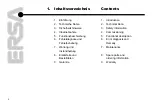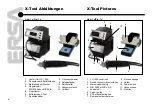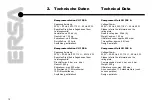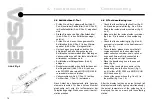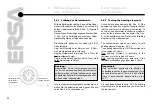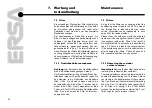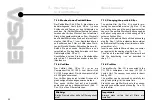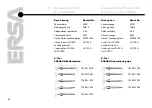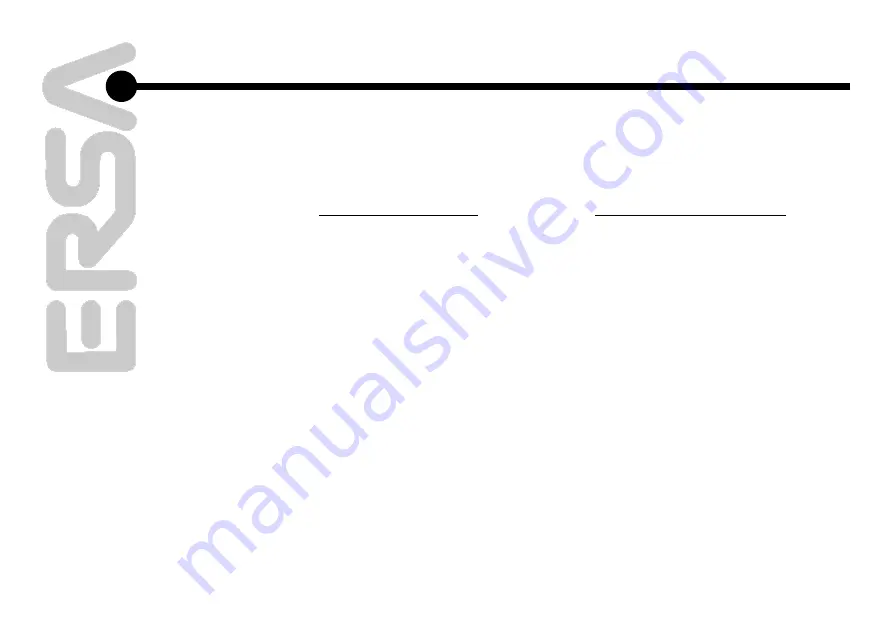
Funktionsbeschreibung
Functional description
5.1 Selecting the correct desoldering
temperature
Always select the lowest possible desoldering
temperature for your job. Excessively high tem-
peratures damage the printed circuit board and
the components.
Guidelines for nominal temperature:
Non-plated printed circuit
approx. 270 °C
boards (PCBs) and smaller
components such as resistors,
capacitors and ICs
Single-layer plated PCBs
approx. 270-300 °C
Multiple-layer plated PCBs approx. 300-330 °C
Multiple-layer and large comp. approx. 350 °C
5.2 Selecting the correct
desoldering tip
Various desoldering tips with different diameters
and quality levels are available for the desolder-
ing iron. The profile of ERSA desoldering tips
matches the meniscus of the soldered joint,
thereby guaranteeing optimum heat transfer.
Select the inside diameter of the desoldering tip
so there is a small ring-shaped gap of approx.
0.1 to 0.2 mm between the connection being
desoldered and the extraction duct. Thus the
used solder can be sucked up.
5.
16
5.1 Auswahl der richtigen
Entlöttemperatur
Wählen Sie stets die niedrigstmögliche Entlöt-
temperatur für Ihre Aufgabe. Zu hohe Temperatu-
ren schädigen die Leiterplatte und die Bauteile.
Richtwerte für Solltemperatur:
Nicht durchkontaktierte Leiter- ca. 270 °C
platten (LP) und kleinere
Bauteile wie Widerstände,
Kondensatoren und IC’s
Einlagige durchkontaktierte LP ca. 270-300 °C
Mehrlagige durchkontaktierte LP ca. 300-330 °C
Multilayer und massige Bauteile ca. 350 °C
5.2 Auswahl der richtigen
Entlötspitze
Für den Entlötkolben stehen verschiedene
Entlötspitzen unterschiedlicher Durchmesser und
Qualität zur Verfügung. Die ERSA Entlötspitzen
sind dem Meniskus der Lötstelle nachgebildet,
um so eine optimale Wärmeübertragung zu
gewährleisten. Wählen Sie den Innendurch-
messer der Entlötspitze so, daß ein kleiner Ring-
spalt von ca. 0,1 - 0,2 mm zwischen dem zu ent-
lötenden Anschluß und dem Absaugkanal bleibt,
um das Altlot absaugen zu können.

